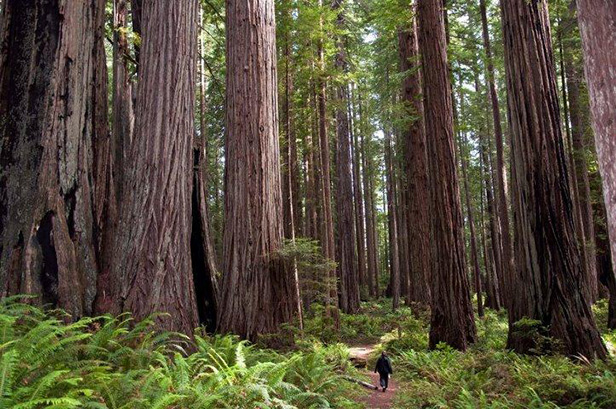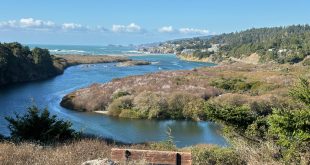By John Reid, September 25, 2023
YaleEnvironment360
Published at the Yale School of the Environment
Only 5 percent of the redwood forests that once stretched across coastal Northern California have never been logged. An initiative to restore these forests is gaining momentum, aided by research showing that redwoods store more aboveground carbon than any forest on Earth.
Lyndon Johnson signed the bill that established the Redwood National Park in California 55 years ago. It was a long time coming, with proposals blocked in the 1920s, 30s, and 40s by an industry that was beavering through the most valuable timberlands on the planet. When the National Park Service recommended a park again in 1964, bipartisan support in the Senate, a nod from President Johnson and, I believe, the trees’ own power to inspire eventually got a deal through Congress.
The national park was not the first redwood park. Several small California state parks had been created decades earlier. But it was the first from which most of the old growth had already been removed. Created in two phases, in 1968 and 1978, 75 percent of our national park had been razed. Overall, the public owns over 100,000 acres of injured, young forest on federal and state land. Land managers are trying to actively nurture some of them into new old growth. Tactics include one-time thinning of dense stands, prescribed fire, closing roads, dropping trees in streams to make salmon-friendly pools, ongoing selective logging to favor a few large trees, and just leaving the forests alone.
Restoration has drawn recent attention and picked up momentum with the launch of Redwoods Rising, an ambitious recovery program. Operations began in 2020 and have been gaining urgency, as the impacts of climate change have become a part of everyday life in the region, and a growing body of science has shown that old-growth redwoods store more aboveground carbon than any forest on Earth, up 2,600 tons per hectare. That’s three to five times as much as even the oldest secondary forests. “The only vegetation that grows faster is sorghum and sugarcane,” says University of Washington scientist Robert Van Pelt.
. . .
Still, the 75 percent of redwood lands in corporate hands are an impediment to healing half the forest. Even those certified as sustainable by the Forest Stewardship Council are never going to grow old. I asked Save the Redwoods CEO Sam Hodder what the league’s strategy is to overcome this obstacle. “Be ready,” he said, when willing sellers come along. Unfortunately, he added, the big redwood timber companies aren’t willing because they’re making too much money.
. . .
Financially, the battered redwood lands of Northern California are well within our means. In 1998, San Francisco’s prominent Fisher family bought 235,000 acres for $200 million to form the Mendocino Redwood Company. That’s $375 million in today’s money. A deal that good is probably not available today, but adding a half million public acres should be doable for a sum in the low billions. Between 1993 and 2020, Californians approved 32 bond issues with an average price tag of $5 billion. An ambitious conservation plan that melds science, culture, economics, and local knowledge could open our wallets for trees that will pay back in many ways for a very long time.
. . .
To read the entire article, visit YaleEnvironment360:
Thinking Long-Term: Why We Should Bring Back Redwood Forests

 Friends of Gualala River Protecting the Gualala River watershed and the species living within it
Friends of Gualala River Protecting the Gualala River watershed and the species living within it


